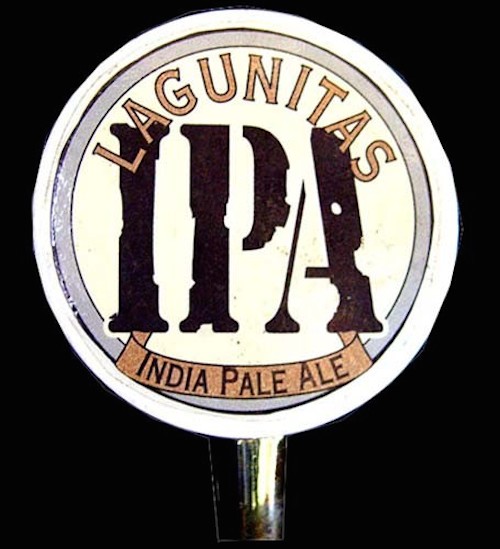There was a recent article in The Atlantic about “the state of American beer,” ultimately using data from Beverage Industry Magazine to see where the different beer brands (the American ones) stand as of the end of 2013. Most of the article is pretty basic — for example, Bud Light is the most popular American beer, with 294 million cases sold and revenue of over 5 billion (for that one brand) — but there are a few interesting tidbits when you get down to the craft beer section. Should be noted: the total veracity of some of these numbers have been questioned by a few different parties. Should also be noted: I would never classify Sam Adams as “craft.” Maybe 10 years ago, but not now.
Anyway, here’s a chart of the top craft beers in 2013:
Look at the “percent change from prior year” category. Then look at Lagunitas. 85 percent growth?!?! It’s nearly double the next highest craft beer. Check this graph too, which appears to confirm it:
That’s pretty insane growth for a craft beer across just one year. Apparently, though, it might be true. This article is a deep dive on the topic, written in late April of 2013:
Two years ago, his brewery, in a quiet industrial park on North McDowell Boulevard, was producing 161,000 barrels of beer, or around 5 million gallons, placing him a modest No. 17 on the Brewers Association annual list of craft brewers for 2011. A blast of growth brought that total to 254,000 barrels last year, enough to vault Lagunitas 11 places to No. 6 in 2012. It could pump out as much as 480,000 barrels this year, during which he expects to hire his 350th employee, a growth of about 100 in just 12 months. The expansion is almost certain to push the brewery even higher on the 2013 list.
I’ll say this: the beer is pretty good. I’ve had the base IPA, and I’ve had the Lagunitas Sucks a couple of times; New York City (where I grew up and lived immediately prior to living in Minneapolis, where I am currently) isn’t a great city for beer, but I used to a regular Friday happy hour with dudes from work on 33rd and 6th (right near the Empire State Building). The bar we usually started at had maybe 15-20 taps, and the two best were Goose Island and Lagunitas; everything else was Bud/Coors/etc. I definitely had a couple of nights in there where I found myself 4-5 Lagunitas deep at about 9pm, headed home with a warm buzz. I fondly associate Lagunitas with that time, then, and I’m liking their growth. I also like this, from the same article above:
“The packaging is unique in a lot of ways; it’s designed for intelligent people,” said Ron Lindenbusch, longtime Lagunitas marketing director. (In Lagunitas’ slightly twisted world, the title on his business card is “Beer Weasel,” while Magee’s cards often say “Imperial Warlord.”)
Their marketing and branding is unique — it’s not quite the PBR approach, but what is? — and their beer is good, so the growth makes sense — even though about 2,400 new craft breweries have opened in just the past decade or so. It should be noted that Lagunitas is expanding into Chicago in terms of production — their CEO is from there — which should only help them reach additional customers. (The facility opened this past week.)
You can have a whole argument about what should constitute craft at this point in the American beer evolution — should it be based on the sheer size of the brewery, or the resources associated with the product, or the distribution model, or something else — but I’d classify Lagunitas still as “craft,” even though it’s doing 56 million in sales. You don’t see something like that on tap unless the place is trying to be a “beer bar” or at least appeal to a more intelligent beer drinker (even a beer snob, etc.) Their growth is stunning — whether it’s 72 percent or 85 percent is essentially a matter of semantics — and while it probably can’t keep up at that clip, it does showcase some important lessons around marketing and selling beer (keep the internal culture light, expand facilities, and appeal to the smart drinker, not the everyday one — well, Bud Light can do the latter).


